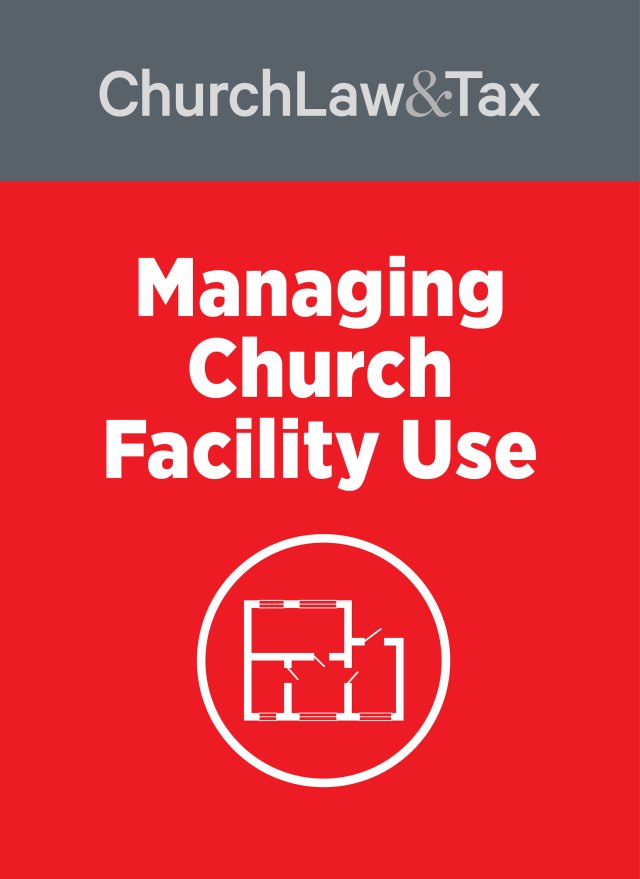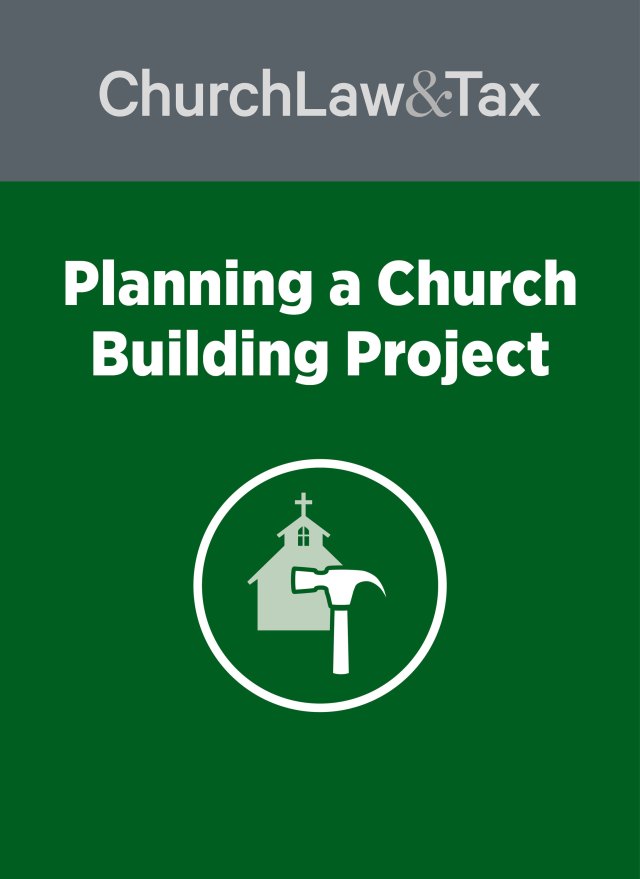Several years ago, members of the Bridge Church in Fresno, California, committed millions of dollars to a special capital campaign to upgrade facilities and expand parking lots.
But the church didn’t make a plan to set aside the future funds needed to keep its facilities running well.
“There had been pretty serious deferred maintenance for a while prior to that date,” recalled Dave Cowin, who serves as chairman of the church’s elder board.
When Cowin joined the elder board of Bridge Church in 2012, he proposed creating a capital reserve fund as part of the church’s annual budgeting process. The board chose to go with Cowin’s proposal. It was a wise decision that safeguarded the church’s resources and saved thousands of dollars for other ministry priorities just a few years later.
Like Bridge Church, many churches spend valuable time, energy, and money getting buildings, but then neglect to plan—and budget—for the expenses needed to keep those buildings operating.
“They are more than happy to raise the money to move into a building,” said Tim Cool, chief solutions officer and project facilitator for North Carolina-based Cool Solutions Group. But after they move in, churches “fail to plan for the fact that everything in [their] buildings has a natural life of deterioration.”
Items such as air-conditioning systems and roofs are major expenses that all churches must think about repairing or replacing at some point. Without adequate capital reserves, churches find themselves scrambling when a major repair or replacement arises—and often paying more than necessary because of the need to finance the expenses through a loan.
How can churches plan? These six tips are a good way for any church to get started.
1. Avoid the “if it ain’t broke, don’t fix it” mentality.
Every air-conditioning unit, every piece of carpet, every window, every light, and the entire roof will need to be replaced at some point. It’s vital for leaders to recognize all of it needs to be replaced sooner or later. And setting funds aside now may avoid more painful scenarios later—like a church that needs to rent temporary worship space while its air conditioning gets fixed.
“A church generally should figure somewhere between $2 and $2.50 per square foot* annually for maintenance” of all types, Cool said.
2. Don’t ignore “out of sight, out of mind” items.
The two most expensive items that surprise churches most often: broken air-conditioning systems and roofs that need to be replaced.
Church officials “tend to look at the thermostat, but the HVAC unit itself may be in a mechanical room or may be in a basement or up on a roof,” said Matthew Swain of Association Reserves, a company that conducts reserve studies for worship facilities and other types of properties. “And they just hit the thermostat Sunday morning to make sure it turns on.” Then suddenly there’s no heat or AC on a Sunday morning, Swain said. “So that’s usually the most common thing. Roofing would be next because it’s out of sight, out of mind.”
An unexpected repair or replacement can be much more expensive than preventing the problem from occurring in the first place, said Vonna Laue, a CPA and senior editorial advisor for Church Law & Tax.
“So if we can have a good system of preventive maintenance, it just allows things to last longer and keep their costs down,” Laue said. “If you don’t have reserves in place, and all of a sudden you have to scramble to finance something, you could find yourself being subject to significant interest rates or financial difficulties because of the lack of planning.”
3. Good stewardship includes physical assets.
As Swain sees it, churches must maximize their time, talent, and treasure to fulfill the Great Commission of Matthew 28:19-20, where Jesus said, “Go and make disciples of all nations.”
“If we replace things on time and on budget, we can be dedicated to preaching the Good News and toward making disciples,” he said. That way, “we’re not dealing with facility crises or leaking roofs, with mold intrusion or with having parishioners—on a Sunday in August—sweating it out because we didn’t replace that AC unit back in April. So it is absolutely a biblical issue, and we need to make sure we’re protecting the spiritual welfare of the church.”
At the same time, a financial crisis or a poorly maintained building reflects poorly on the church in the community, Laue said.
“That’s part of our testimony,” she stressed. “We need to represent Christ the best we can in everything that we do, and this is just one aspect of that.”
4. Tap experts to assess your needs.
In some cases, a volunteer within the congregation—perhaps a contractor or a facility administrator for a school or hospital—may be helpful in assessing a church’s facility needs.
These volunteers can help identify the most significant needs and where critical items are in their life cycle, Laue said. And they can start to put together a budgeted replacement plan. Online tools, such as Cool Solutions’ eSPACE.cool, are available.
In other cases, a church may benefit from hiring a professional consultant.
Kevin Folsom, director of special projects at Building Solutions, said he would recommend a consultant with experience working with both smaller and larger churches.
“Look at their ability to be cost-effective for smaller churches,” Folsom said. “If they also have the sophistication of doing larger institutions, that’s probably a good mix for a consultant.”
Laue recommended reviewing a consultant’s sample reports from previous jobs, and Swain said professional credentials from accredited organizations are important. Experience working with churches is crucial, Cool said, as is an ability both to identify current needs as well as develop financial plans for the future.
5. Create a capital reserve account, even if you start small.
Swain recommends a church keep 100 percent funding in the bank to cover all potential maintenance and replacement needs.
“It’s a pretty simple mathematical concept if we boil it down to its fundamental value,” he said. “What we do is we take the percentage of life that’s used up (for example, on a roof expected to last 30 years) and we multiply that by the total current replacement cost. And that gives each church a marker in time that says, as of today, here’s how much money you should have set aside for this component.”
At Bridge Church, however, Cowin said leaders—who benefited from Swain’s consulting work—have taken a more conservative approach to developing a capital reserve program. Setting aside monthly contributions for a “fully funded” capital improvement program would “hold too much of God’s money under a rock where it’s just sitting there,” Cowin said.
Instead, the church has budgeted about $60,000 a year for the capital reserve fund—out of a total annual church budget of about $2.4 million—for what’s referred to in the industry as a “baseline” capital improvement program.*
That reserve fund is now at roughly $200,000* and is sufficient to meet most anticipated needs, such as replacing the church’s aging HVAC units, as well as expected needs, Cowin said. The goal, he said, is to responsibly address maintenance and replacement needs without “financially crippling the church’s primary missional purpose.”
6. Work toward your plan every year.
The proactive approach, in contrast to its previous reactive philosophy, has already paid dividends for Bridge Church.
“We’re able to do things that we wouldn’t be able to do otherwise, such as replacing the roof on our sanctuary without a capital campaign,” Cowin said. “We’re able to make upgrades to our audio-visual system. We’re putting in a state-of-the-art video surveillance system throughout the entire campus. And we’re paying for these things debt-free and not asking the congregation for additional money because contributions toward our capital reserve program are now part of the general fund budget.”
When Bridge Church started assessing its facility needs, 46 of its 52 HVAC units were over 30 years old. Maintenance costs for those aging units were getting expensive. Moreover, the older HVAC units cost more to operate because of the lost energy savings otherwise available with higher energy efficiency technology used in newer HVAC units.
There’s now a scheduled multiyear timeline for replacing the units—and no financial scramble if one happens to break down before its scheduled replacement.
“We just replaced six HVAC units per our schedule before they broke down,” Cowin said. “What happens if three units were to unexpectedly go out next week? Not a problem. We can replace them the next day because we already have the money available to pay for them.”
*Figures represent estimated costs or funds at the time the article was written.




